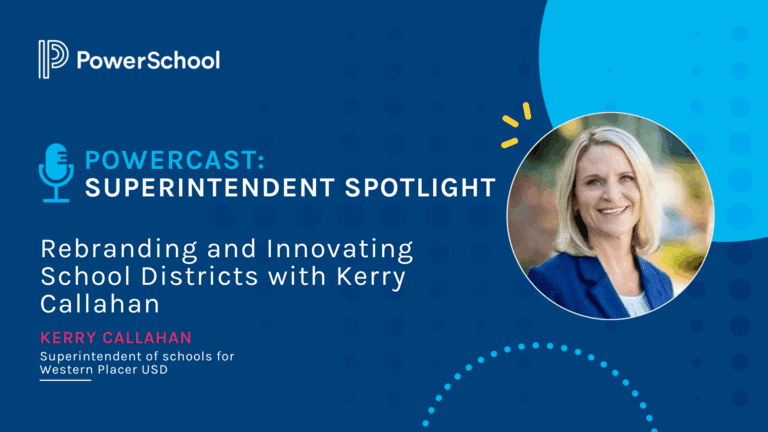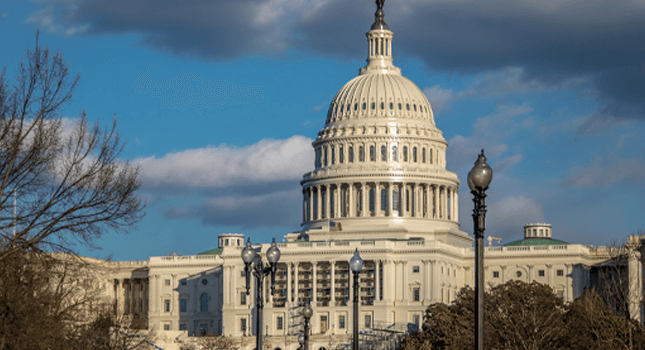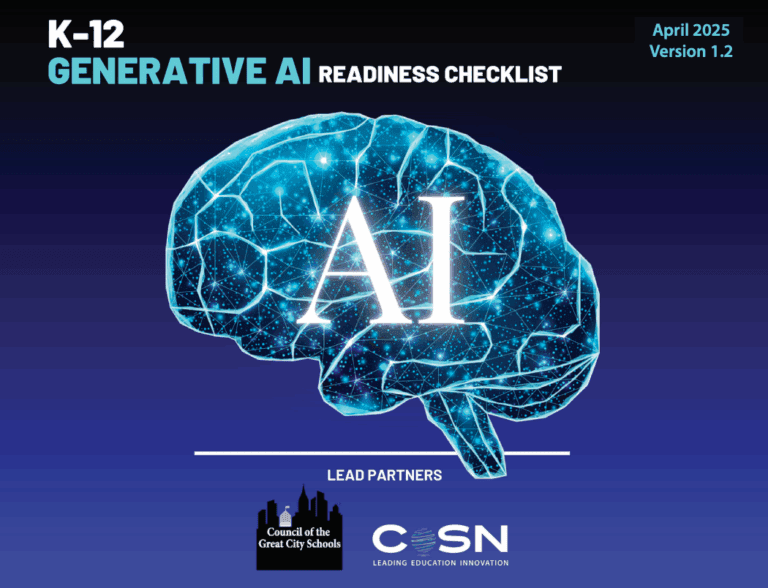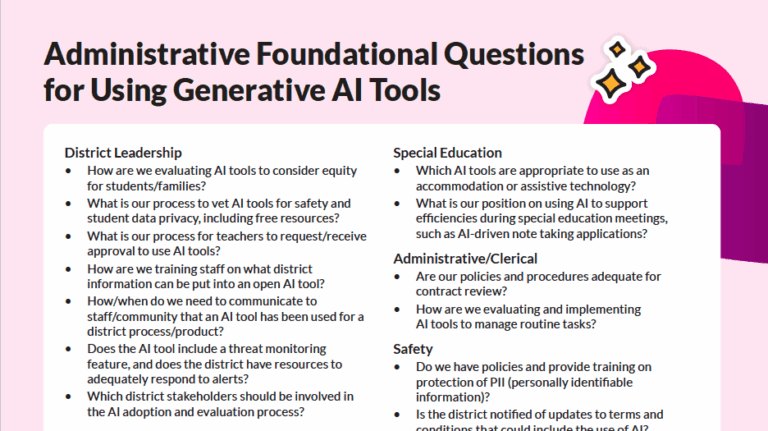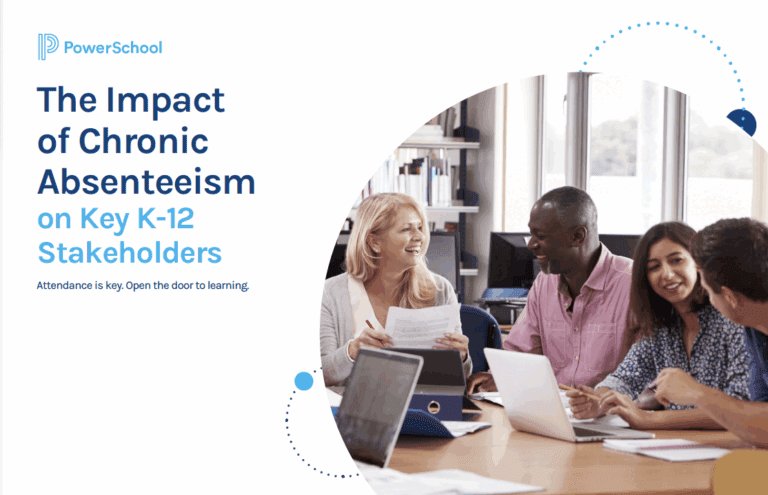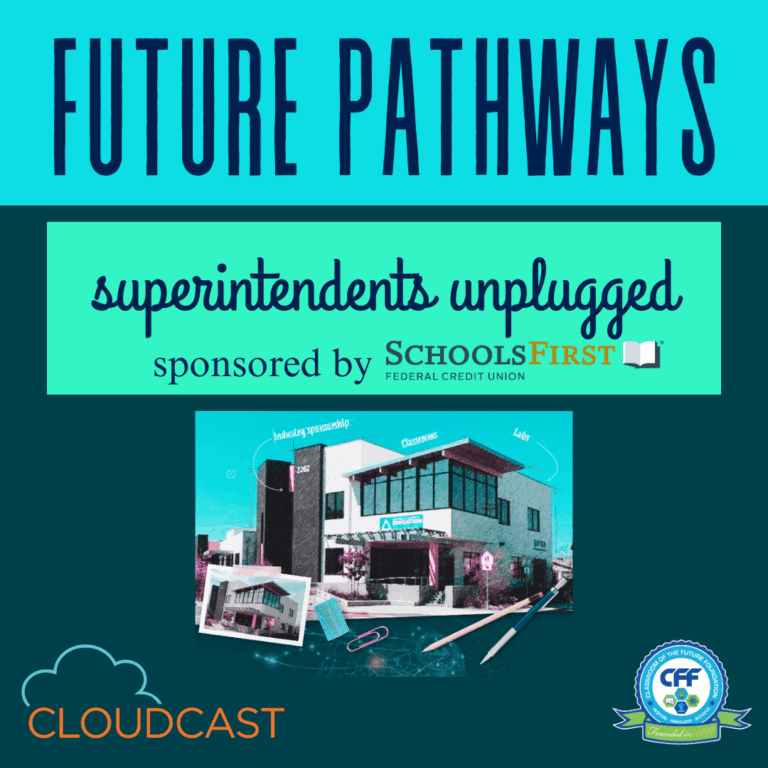Often underutilized, school counselors can be strong partners in meeting the academic, social-emotional and career development needs of students.
By Caroline J. Lopez and Loretta Whitson
Administrators are currently faced with directing and implementing several initiatives, including Common Core State Standards, Smarter Balanced Assessment Consortium testing, and Local Control and Accountability Plans. Within that context, it is important to recognize that the eight core LCAP priorities require intensive and authentic involvement of stakeholders.
The challenges of meeting these goals are too complex for any one individual to manage. Instead, meeting the wide range of student needs in today’s educational settings calls for strong collaborative leadership.
The report “How the World’s Most Improved School Systems Keep Getting Better” examined school systems in 20 diverse countries that experienced continuous improvement (Mourshed, Chijioke and Barber, 2010). One common thread was a strong reliance on teamwork to identify and respond to problems. Through collaborative leadership, administrators can make the changes required to raise the bar and close the gap for all students.
One often underutilized collaborative partner is the school counselor.
The LCAP creates a unique opportunity for school counselors and administrators to act as allies in school reform. Too often school counselors have been left at the periphery of education reform. As part of the administration’s collaborative team, school counselors have a vital role to play in addressing three broad domains: 1) Conditions of Learning; 2) Pupil Outcomes; and 3) Engagement.
As California aims to improve its education system and implement the Local Control Funding Formula, school counselors can play a critical role in addressing equity challenges and meeting the eight state priorities, which include school climate, high school graduation rates, and access to college preparation courses, among others.
The principal-counselor relationship
How do administrators and school counselors begin to build a collaborative relationship? What are the qualities and actions that make a strong relationship? According to a study conducted by the College Board (Finkelstein, 2009), the 10 characteristics of a strong principal-counselor relationship include:
- Open communication that provides multiple opportunities for input to decision making.
- Opportunities to share ideas on teaching, learning and schoolwide educational initiatives.
- Sharing information about the needs within the school and the community.
- School counselor participation on school leadership teams.
- Joint responsibility in the development of goals and metrics that indicate success.
- Mutual trust between the principal and school counselors.
- A shared vision of what is meant by student success.
- Mutual respect between the principal and school counselors.
- Shared decision making on initiatives that impact student success.
- A collective commitment to equity and opportunity.
There are several ways that administrators and counselors can begin to establish collaborative relationships. First, administrators and counselors should set aside time for regular communication and collaborative planning. Administrators and counselors have identified time as the greatest challenge to collaboration (Finkelstein, 2009).
Collaborative planning can be accomplished through weekly, bi-weekly or monthly meetings that include a review of student needs, mutually established goals and individual tasks for the week. Purposeful planning helps ensure that school counseling services align with the mission and vision of the school.
Secondly, administrators and school counselors should share information. The more each knows about the work they are doing, the better they are able to support the whole child.
Lastly, administrators can include school counselors on school and district leadership teams. School counselors understand children as individuals and as participants within a system. They take a holistic approach to student development and can provide valuable insight into how to best meet the academic, social-emotional, and career development needs of students.
Simply put, a strong collaborative relationship takes place when members of an inclusive team work together as equals to assist students to succeed in the classroom. Michael Fullan argues that purposeful collaboration is one way of ensuring that there is coherence and centrality of purpose within any reform process. By merging effective skills sets and abilities and making effective use of time, school counselors and administrators can address current issues and challenges more comprehensively.
The role of the school counselor
Effective collaboration is focused and intentional. Therefore, it is critical that administrators understand what expertise and services school counselors bring to the table. According to the American School Counselor Association (ASCA) National Model, school counselors play an important role in the academic, social-emotional and career development of all students through the implementation of a comprehensive developmental school counseling program.
School counselors are specifically trained to provide services that identify and resolve barriers to student success (Whitson and Stephens, 2014). To achieve maximum program effectiveness, ASCA recommends a school counselor to student ratio of 1:250.
California is second to last in the nation, with a ratio of 1:826. Given these enormous caseloads, it is essential that administrators and counselors are strategic in the ways in which school counseling programs support students.
School counselors should spend 80 percent or more of their time in direct and indirect services to students. Direct services include classroom lessons, individual and group counseling, advisement and crisis response. Indirect services include consultation and collaboration with parents and teachers, and referral.
In October 2015, Senate Bill 451 was passed, updating Section 49600 of the California Education Code authorizing school districts to provide the structures for a comprehensive educational counseling program to meet the growing demands of California’s K-12 students. These updated statutes align school counseling services in a way that helps districts meet the eight statewide education priorities.
The following outlines the LCAP priorities, along with examples of authorized counseling services that meet district goals.
The eight LCAP priorities
Priority 1 – Student Achievement: Improving student achievement and outcomes along multiple measures, including test scores, English proficiency, and college and career preparedness.
Administrators and school counselors can work together to disaggregate achievement data and identify students in need of support. School counselors are masters at relationship building. By meeting with students individually and/or through the administration of a needs assessment, school counselors can help identify barriers to learning, including self-esteem, home-life, study skills, motivation, learning or mental disorders, and coordinate appropriate and targeted intervention services, such as counseling, community agencies, tutoring or study skills and time management groups.
School counselors collaborate with parents, community members and community agencies to secure resources that may not be available within the school setting. When appropriate services are lacking, school administrators and counselors can brainstorm to identify and seek out resources. Furthermore, school counselors can conduct classroom lessons and parent workshops on a variety of topics related to student achievement including: 1) the purpose and impact of the Common Core State Standards and Smarter Balanced assessments; 2) the benefits of Advance of Placement courses; 3) test-taking strategies and ways to reduce test anxiety.
By participating in leadership teams, school counselors can work with administrators, teachers and the counseling department to develop systems for monitoring and increasing enrollment in AVID, Honors and AP courses, A-G courses and early assessment programs.
Priority 2 – Other Student Outcomes: Measuring other important student outcomes related to required areas of study, including physical education and the arts.
School counselors should assist administrators and teachers in educating parents and students about multiple student outcomes, including academic pathways. Because school counselors work with students on academic planning and career and college counseling, they are in a unique position to support in this area.
For example: school counselors can assist in monitoring course enrollment patterns. They can also work on educating students and parents on standardized testing such as PSAT, ACT and SAT, as well as monitor results and passage rates.
School counselors frequently utilize computer assisted career guidance systems, such as Naviance, with students. Their knowledge of these systems can be useful in monitoring enrollment patterns, goal-setting and successful completion of community college and four-year colleges and universities.
Lastly, school counselors can refer students to career technical education programs and internships.
Priority 3 – Course Access: Ensuring all students have access to classes that prepare them for college and careers, regardless of what school they attend or where they live.
Academic and career planning resources are part of a comprehensive school counseling program designed to guide students through a successful transition from school to viable postsecondary options and to develop the career self-management skills necessary for life-long career success. Furthermore, counselors can assist in professional development workshops that train teachers on recruiting under-represented subgroups for enrollment in Honors/AP courses.
School counselors are uniquely trained in career development theory and interpreting career assessments. Given this knowledge, school counselors can assist administrators in the development of interest inventories to determine next steps in increased course offerings.
School counselors work toward removing systemic barriers at any level to create an environment where all students can succeed. Through the use of focus groups and needs assessments aimed at parents, teachers and students, school counselors can assist in investigating barriers to UC/CSU A-G completion rates and help administrators develop a plan to reduce these obstacles.
Together, administration and the counseling program can review current graduation requirements and move toward greater alignment to UC/CSU A-G course requirements.
School counselors can also lead parent workshops to provide in-depth information on CCSS, UC A-G, post-secondary options, college admissions, as well as financial aid parent education workshops, in collaboration with community organizations.
Through vertical team articulation between elementary and middle school, and middle and high school, school counselors and administrators at all levels can collaborate to ensure successful transition plans and systems of support are in place for students in need of additional assistance.
Priority 4 – Common Core State Standards: Implementation of California’s academic standards, including CCSS in English language arts and math, Next Generation Science Standards, English language development, history social science, visual and performing arts, health education and physical education standards.
School counselors in several ways can work collaboratively to contribute to the success of CCSS implementation. Over the years, researchers have pointed to the relationship between high-stakes testing and teacher stress, suggesting the additional stress undermines meaningful instruction as well as diminished job satisfaction for those working in low-performing schools (Foley and Nelson, 2011).
In 2013, Frank Wells wrote for the California Teachers Association, “Educators are heading back to school with a mix of optimism and anxiety over the transition to the new Common Core State Standards.”
School administrators, in recognizing staff needs regarding stress, could work with their school counselors to develop staff development modules to reduce stress and increase productivity and tolerance for the changes they have had to face because of the implementation of CCSS and other reform measures.
Another partnering opportunity is school counselors supporting the school’s parent outreach goals by conducting parent workshops, assisting parents in understanding the CCSS and the Smarter Balance assessment measures.
Priority 5 – Core Services: Providing all students access to fully credentialed teachers, instructional materials that align with state standards, and safe facilities.
School counselors and school administrators working collaboratively can help “equalize the playing field” for California’s legislatively identified youth, providing the additional services and support they may need in gaining access to instructional materials. This begins by school counselors utilizing their skills in building community partnerships and to increase access to the variety of services available to these youth.
For example, they can collaborate with churches and community outreach centers to increase community referral resources. Additionally, they can work with foster care providers and social workers to ensure each student has the school supplies they need and understand the other provisions offered under California law for transitioning foster care youth to access college or other post-secondary opportunities.
Equally, homeless youth often need a school-based case-management approach in managing the unique challenges associated with being homeless. They may need special arrangements for managing text books, instructional materials and after-hour access to technology.
Priority 6 – Student Engagement: Supporting student engagement, including whether students attend school or are chronically absent.
Administrators and school counselors can identify and track chronically absent students, determine reasons for absenteeism, and develop appropriate intervention plans. By working in partnership, truant students are quickly identified and referred to individual or group counseling services offered through the school counseling program.
School counselors can also conduct workshops for both parents and students on topics such as time-management, establishing routines, or coping with anxiety-based school refusal behavior.
Priority 7 – Parent Involvement: Parent involvement and participation, so the local community is engaged in the decision- making process and the educational programs of students.
According to the American School Counselor Association, school counselors are called to work with students, their families and community members as part of a comprehensive counseling program to become knowledgeable about community resources and actively pursue collaboration with family members and community stakeholders.
School counselors are skilled in family-school collaboration and in program development and evaluation. Consequently, school counselors are called to create, lead, facilitate and evaluate these partnerships and work to remove barriers to collaboration, including mistrust and miscommunication between parties, resistance to the concept and practice, transportation and childcare issues, and accessible meeting times.
This can include collaborating with administrators to provide parent information nights, academic planning programs for parents and students, and classes on parent and family education. School counselors can invite parents for one-on-one conferencing to review student progress toward both education and career goals, assist in the interpretation of assessment results for parents, provide resource referral information, and exploration of college/career options with parents and students.
In order to ensure joint responsibility in the development of goals and metrics that indicate success, school counselors should participate in the creation of parent surveys to ensure parents have the opportunity to provide feedback on school counseling programs and services. School counselors can sit on a variety of schoolwide advisory committees, including committees related to LCAP priorities.
Priority 8 – School Climate: Highlighting school climate and connectedness through a variety of factors, such as suspension and expulsion rates and other locally identified means.
School counselors work to promote safe learning environments for all members of the school community and regularly monitor and respond to behavior issues that impact school climate, such as bullying, student interpersonal struggles and student–teacher conflicts. School counselors use research-based strategies to reduce stigma, conflict and pupil-to-pupil mistreatment and bullying.
Administrators can work with their school counselors toward promoting and maintaining safe learning environments by participating in leadership committees implementing Restorative Justice practices, Positive Behavior Interventions and Support services. School counselors can assist in analyzing climate survey data, including expulsion/suspension rates and the California Healthy Kids Survey, and deliver evidence-based curriculum on violence prevention, social and emotional competence, character development and health.
School counselors and administrators can work collaboratively to develop an improved, progressive and developmentally appropriate discipline plan, that includes teacher training, in order to provide other means of correction. Furthermore, school counselors can assist administrators in consulting with teachers on student behaviors and in monitoring schoolwide small group and individual interventions for students.
Elementary, middle and high school counselors can assist in the coordination of peer mediation and character education programs.
It is through effective collaboration that school staff can begin to accomplish extraordinary things. Fullan attributes this to two factors. One is that knowledge about effective practice within education specialties becomes more widely communicated and accessible. Second is that working together creates a commitment to shared goals for student success.
By merging skill sets, administrators and school counselors can more efficiently address current issues and challenges more comprehensively, and creative possibilities can be imagined and implemented.
Resources
ASCA National Model: A Framework for School Counseling Programs: http://schoolcounselor.org/ascanationalmodel/media/anm-templates/anmexecsumm.pdf (accessible at http://goo.gl/HuFCGP).
SB 451 and the updated role of school counselors in California: https://leginfo.legislature.ca.gov/faces/billTextClient.xhtml?bill_id=201520160SB451 (accessible at http://goo.gl/7S3B3j).
Planning tools to enhance the principal-counselor relationship: https://secure-media.collegeboard.org/digitalServices/pdf/nosca/11b_4729_PC_Toolkit_WEB_111104.pdf (accessible at http://goo.gl/DMCLWO)
Finkelstein, D. (2009). “A Closer Look at the Principal-Counselor Relationship: A Survey of Principals and Counselors.” College Board Advocacy & Policy Center.
Foley, G. and Nelson, S. (2011). The impact of annual progress on middle school principals’ job satisfaction. National Forum of Educational Administration and Supervision Journal, 28(2), 27-50.
Fullan, M. (2011), “Choosing the Wrong Drivers for Whole System Reform,” Centre for Strategic Education Seminar series paper no. 24, available at: www.cse.edu.au. (2011b), “The Moral Imperative Realized,” Corwin Press and Ontario. Principals Council, Thousand Oaks, CA and Toronto.
Mourshed, M., Chijioke, C. and Barber, M. (2011). “How the worlds most improved school systems keep getting better.” Educational Studies, (1), 7-25.
Wells, F. (2013, September). “Transitioning to common core standards: CTA provides resources, training, and assistance.” California Educator, 18(1), 50-60.
Whitson, L. and Stephens, D. (2014). “Brief: Increase college- going rates in California and fulfill the goals of LCFF” (accessible at http://goo.gl/rgcYvi).
Caroline J. Lopez, Ph.D., is an assistant professor in the counseling program at Chapman University in Orange. She previously worked as a school counselor in Los Angeles County. She can be reached at .
Loretta Whitson, Ed.D., is an assistant professor, currently serving as chair of Educational Counseling Program for the University of La Verne. She is the founding president and executive director for the California Association of School Counselors. She can be reached at .










